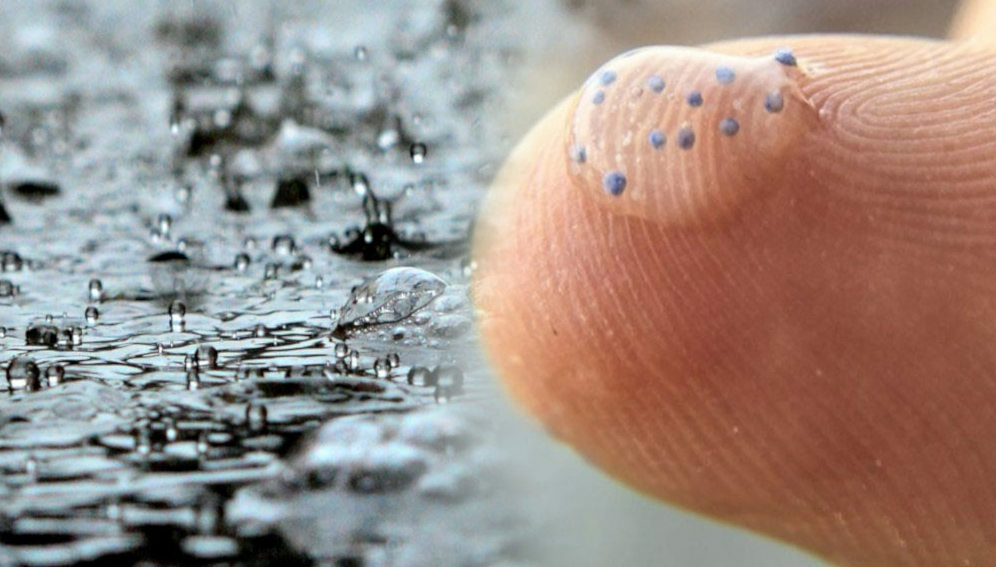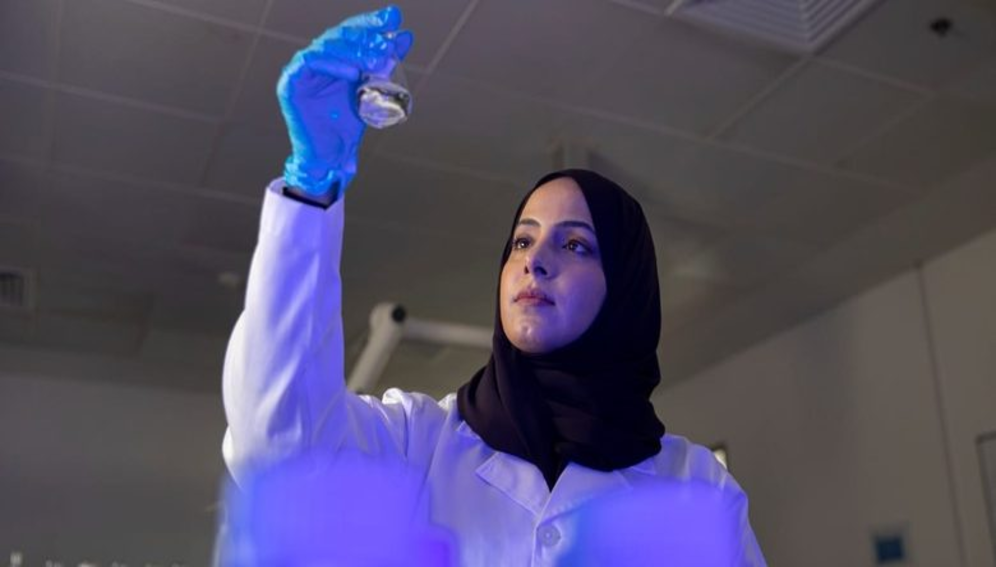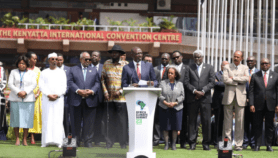22/11/22
Q&A: TV contest winner’s microplastics innovation

By: Samir Mahmoud
Send to a friend
The details you provide on this page will not be used to send unsolicited email, and will not be sold to a 3rd party. See privacy policy.
The popular Arabic TV show Stars of Science is in its 14th season but winners of the contest had previously all been men – until Omani innovator Somaya Al-Siyabi entered the race.
The programme was launched by the Qatar Foundation for Education, Science and Community Development in 2008 to encourage aspiring science and technology entrepreneurs in the Middle East and foster new talent.
Al-Siyabi, an innovation and science specialist at North Sharqiyah Education, in Oman, was crowned winner of this year’s competition for her hi-tech device designed to help solve the problem of microplastic waste in the sea.
“In half a century, plastic bags and waste will become more numerous than fish in the seas and oceans,” Al-Siyabi tells SciDev.Net in an interview about her award-winning innovation and the path that led her to it.
How did you become a specialist in innovation?
I worked as a teacher, passionate about science and biology, for five years and I always attended conferences, seminars and scientific forums … before becoming a robot programming trainer for teachers in the North Sharqiyah governorate.
I then obtained my Master’s degree in biology from the College of Science at Sultan Qaboos University, before returning to work in schools and then moving to the Scientific Exploration Centre to become an innovation specialist.
Before all that, I attended Sumaya School for Girls in Ibra, and when I studied biology I felt that it was the field in which I could excel. But this clashed with my family’s desire for me to specialise in education and mathematics. They wanted me to become a teacher, and although it was not my desire, it was the right start to my career path and I went on to specialise in biology until after four years I became a biology and science teacher.
What is the story behind your passion for innovation and the Stars of Science competition?
My passion for innovation and interest in scientific research began during my Master’s degree in 2017, as scientific research and innovation took the lion’s share of my time. It motivated me to learn, read previous studies, and try to reach solutions about the problems facing the environment. In 2021, I received the Youth Proficiency Award, an annual award granted by the Ministry of Culture, Sports and Youth to encourage Omani youth to be creative and innovative in various fields.
The same year, I participated in the Challenge and Innovation Forum in Qatar, during which I heard about the Stars of Science competition and learned about the steps to apply. I submitted my idea to get rid of microplastics and it was accepted among the 100 innovations submitted to the competition. It was then sifted into the best seven innovations, before the final winner was announced and I received the honour of this precious title.
Why microplastics?
For years, I have followed the problem of the concentration of microplastics in huge quantities in the seas, as plastic accounts for 85 per cent of all marine litter and is a harmful and polluting material for the oceans.
I spent a lot of time researching and reading in order to come up with an idea or innovation to get rid of this amount of microplastic, as I was working in the field of biotechnology and nanotechnology separately.



Innovator Somaya Al-Siyabi. (Courtesy photo).
But through my participation in Stars of Science, I focused on merging the two methods, both sequentially so that one side does not affect the other, and so that each side is supportive to the other, to speed up the process of analysing the microplastic. This was highly praised by the jury in the competition, because it is a modern method and is highly effective, and I am now working on patenting an invention.
What is the innovation?
My project is on the treatment of microplastics, which are less than five millimetres in length and represent a serious threat to the aquatic environment and living organisms. It is an environmentally friendly device in the form of a floating ball containing microbial mats and nanomaterials, which analyses the microplastics that come into contact with them, under the sun, within a short period of time. The device can float on top of piles of plastic waste in the oceans, capturing and disposing of microplastics.
What impact did you achieve after you were announced as the Star of Science?
I left my family and three children for three months to sit in laboratories, working hard to showcase and prove my innovation, and visiting the highest scientific centres in America. But I consider the biggest impact not to be fame, nor the reward for what I researched and worked so hard on. What pleased me was the interest of the Omani and Arab audiences of all ages to follow the stages of the Stars of Science competition, as if they were following a football tournament.
The question is no longer “who is Somaya?” Rather, “what did she do to become the talk of all Arabs”? The competition has succeeded in creating an interest in science and its role in development and solving global problems, and this in itself is a success and a great impact.
I saw this in the countless messages I received from children and adults, not only from Oman but from most countries in the Arab world, and some of them wept with joy.
Innovators face many challenges. What about you?
The most prominent challenges that faced me were the lack of studies and research related to this field. But if we succeed in applying this innovation on the ground, it will solve the problem of microplastics significantly … and I consider that obtaining the title of Star of Science is the beginning of a long road and not the end. Currently, I am seeking to establish my own company with employees from different disciplines related to the project.
What happens after the Stars of Science win? Have companies or scientific bodies contacted you to adopt your innovation and work to implement it?
There are ministries and government and private agencies that have already supported me and believed in my innovation, and since the award I have already received many calls and inquiries, especially from entities within the Sultanate of Oman. But as you know, taking innovation to the next stage is time-consuming.
We need to apply the experiment in wider and larger environments and laboratories to monitor the variables that affect the success of the project idea, which is based mainly on the formation of cells of the catalyst; these cells are like the building blocks of a microplastic analysis unit.















